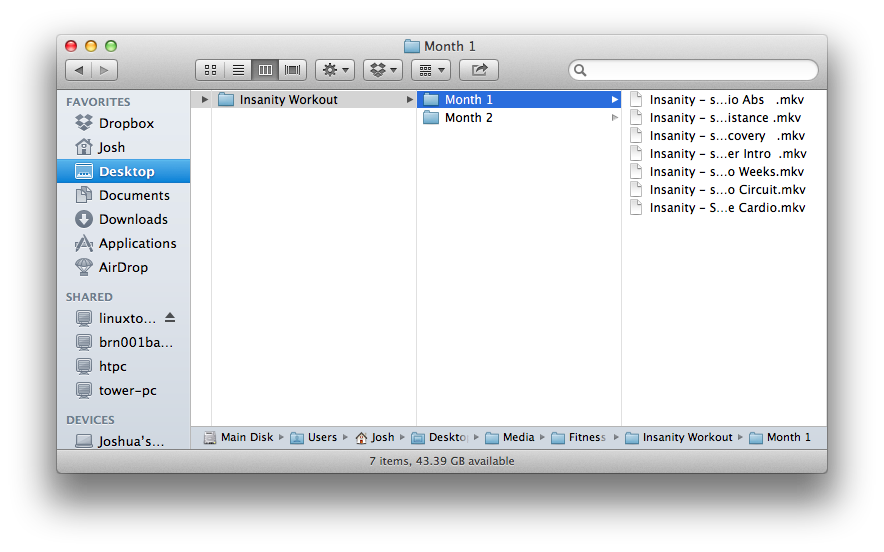The Path For Mac
Find the file whose path you need to know using Finder Then right click, or ctrl-click on the file and select 'Get Info' A dialog will appear showing all sorts of data about the file. The path is shown next to 'where:' Also, open any finder window, right-click on a blank part of the tool bar (immediately below the title bar) and select'Customize.'

Now drag the 'path' button onto the tool bar. Now whener ever you need to know the absolute path of a file, just click the 'Path' button. More information: Mac (and all Unix operating systems) do not use Drive letters as you have probably guessed. All paths take the form. Volume name folder folder folder file.extension Finally, most of your 'special folders' such as Documents etc will live at: Macintosh HD username Documents The desktop is at Macintosh HD username Desktop and so on. Obviously the 'username' is your logon name, and 'Macintosh HD' is the volume name of your boot volume. It may be different from 'Macintosh HD'.
I hope this helps. Kenny Some of the information in your post is correct, some not. The 'Get Info' stuff, and the Finder window customisation are fine. But there are two problems: Firstly, OS X uses a solidus or ' forward slash' as a path separator, not the 'backslash' used by Windows. Secondly the volume name does not usually appear in the path, if it relates to the boot volume. So a user's Documents folder has the path '/Users//Documents'. If another volume is involved, it would be /Volumes//rest ofpath There is potentially another problem with spaces in filenames, which may or may not be relevant here.
Mediamst You might want to try if you need to do much of this. It will take care of escaping spaces in filenames for you. Apple Footer. This site contains user submitted content, comments and opinions and is for informational purposes only. Apple may provide or recommend responses as a possible solution based on the information provided; every potential issue may involve several factors not detailed in the conversations captured in an electronic forum and Apple can therefore provide no guarantee as to the efficacy of any proposed solutions on the community forums. Apple disclaims any and all liability for the acts, omissions and conduct of any third parties in connection with or related to your use of the site.
All postings and use of the content on this site are subject to the.
Advertisement Mac OS X Change $PATH Variable Guide explains how to change the system PATH variable in Apple OS X Mavericks and Mountain Lion from terminal bash. Normally, we do not need to change the system PATH. Questions about the settings of environment variables and the PATH are quite common.
A simple explanation of what PATH mean to the OS, as well as simple guidelines on how to set and read them accordingly are rightly shown in this Mac OS X Change $PATH Variable Guide. Mac OS X Change $PATH Variable Guide: Before We Start We usually use iTerm2 instead of Terminal. It really does not matter which Terminal Program you are using (You can read about here).
The Patch For Menopause
For example, while, we need the PATH. Environment Variables in Linux are prefixed with a dollar sign ($) such as $HOME or $HOSTNAME. Many well-known and standard variables are spelled out in capital letters to signify just that. Keep in mind that variable names are case sensitive meaning that $User and $USER are entirely unrelated from the shell’s point of view. Unix derivatives define system wide variables in shell-scripts located mostly in the /etc folder, but user-specific values may be given to those variables in scripts located in the home folder (e.g /etc/profile, $HOME/.bashprofile). The.profile file in the home folder is a common place to define user variables. These files are regular shell scripts and can contain more than just environment variable declarations.
To set an environment variable, use export. To show your currently defined environment variables in a terminal, run env. The export command is a standard way to define variables. The syntax is very intuitive. The outcome is identical for these two lines. Echo $ PATH You will get the current path.
You got the current path, now you can use the previous command to set the path to easier one. In the previous guide on, basically we did a kind of ugly cheat, but in these situations, you’ll either need to know the location of:.bashprofile or Edit from the /etc/paths.d directory. Apple has pathhelper utility. In the first case, which is more commonly used – we find the.bashprofile file and open it in vi. You must note that, the first way of editing PATH variable is for a single user account but the second way is for the whole OS – thereby all the users. Guide for the second way is here.
Articles Related to Mac OS X Change $PATH Variable Guide. Trigger Gesture Events on OS X – do you want to trigger multi-touch gesture events on OS X?


Is there a way to do this?. Package Manager or Package Management System allows a convenient management of software, which exists in packet form on Linux or UNIX Like operating system. Homebrew Handy Guide Provides an Easy To Understand Manual For the OS X Homebrew Package Manager Users in Plain English.
Mac Edit Path
Paper Folding Animation for iOS control allows hiding of views on the left and right side of the screen by dragging the middle view. Here are the URLs of some commonly used Mac Apps, so that the users can wget or cURL from command line. Apps include Skype, VLC like softwares. Additionally, can help you. Also, we have.